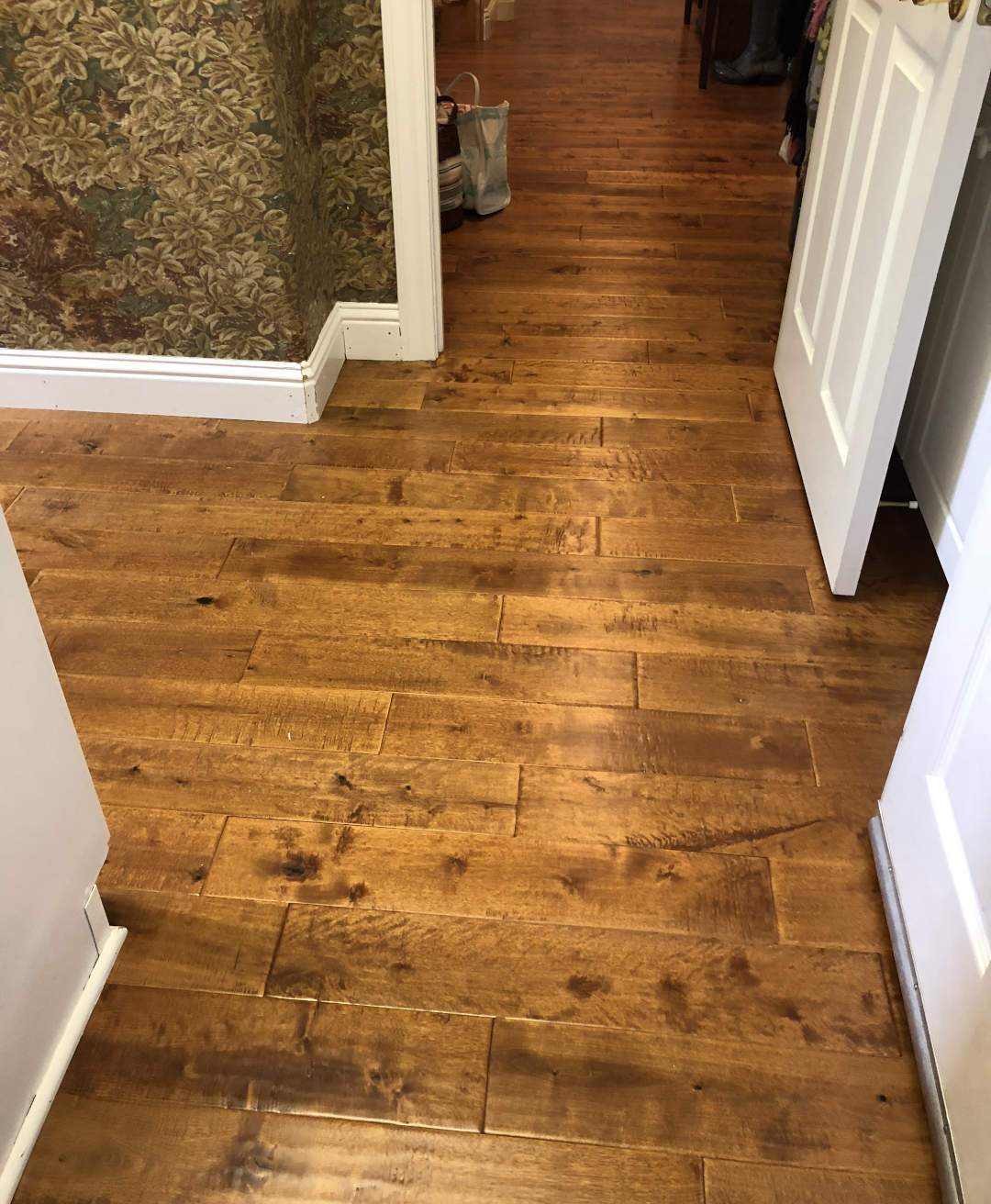
This step is critical as it’s where the stagger truly begins, and all the other rows will follow suit.Īdjacent rows attach following the same tongue & groove method from step 1. The end of this plank should be at least 6-inches apart from the joint in the first row. Use the offcut from the first row to begin the second row.

If the final plank is less than 6-inches, cut off enough from the first plank to ensure the final piece meets the 6-inch requirement. To maintain the plank’s integrity, ensure that the last plank in the row is 6-inches or longer. Vinyl planks connect using a tongue & groove system all you need to do is insert the groove-edge of the second plank into the tongue-edge of the first and snap the planks together. Now you can lay the first plank up against the spacers continue to add planks to this row until you cover the whole length of the wall. Set up the spacers on the starting end of the first plank and along the length of the wall. If you don’t do this, you may have a problem where the finished floor is lighter on one side of the room and darker on another. This will be a huge help when you get to the installation as you can rotate which pile you choose from, ensuring an even shade across the entire floor. Take all the planks out of their respective boxes and sort them into piles of similar patterns. If that happens, cut the planks of the first row to ensure it matches the width of the last row. The last thing you want is to lay full-width planks on your first row, only to be left with a 1-inch gap for your final row. Knowing these measurements will also help to determine the size of your first and last rows, which need to be similar in size to ensure a proper stagger & an aesthetic finish. Take that number and divide it by the width of a single vinyl plank this will tell you how many rows of planks you will need to cover the room completely. Start by measuring the room’s width and subtracting ½-inch to allow for expansion this is your room’s new width measurement.
#Lvp installation how to
Once you’ve chosen the direction to lay the planks, you will need to measure the width of the room (perpendicular to how to want to lay the vinyl planks) to determine the number of complete rows required. In most cases, you will want to begin the installation parallel to the longest wall in your room. You also may need to remove the baseboards in the room.

Place a plank with the finished side down next to the door jamb and trace a guideline, then cut on your mark. All you need for this is a plank & flush cut saw.

You will want to cut the door jamb so your planks can easily slide beneath it. Prepare The SubfloorĮven though vinyl plank flooring does not require any bonding to the subfloor, it’s a good idea to prep it sufficiently.įixing low spots with self-leveling concrete, sanding areas of elevation, and thorough removal of dirt and debris will go a long way in prolonging the lifetime of your new vinyl plank flooring. Steps To Stagger Vinyl Plank Flooring Step 1. A random & staggered pattern is the look you want to achieve. Both of these patterns will create an unnatural-looking floor & cause the planks to lose their structural integrity. Keep these two patterns in mind as you lay out the flooring. This gives off the unaesthetic appearance of an “H” and can cause joints to warp or even pop out altogether.Īn H-Joint is inadequate for the structural integrity of your floor, so be sure to avoid it as best you can when installing vinyl planks.Īs the name implies, a step pattern occurs when multiple adjacent rows are placed repeatedly, giving off the appearance of stairs.

However, before you work on your installation, you must know how to stagger vinyl plank flooring.
#Lvp installation install
It’s inexpensive, very durable, adds a modern look to almost any space, and you don’t need to be a professional to install it! In the past few years, vinyl plank flooring has become one of the most popular flooring options on the market.


 0 kommentar(er)
0 kommentar(er)
